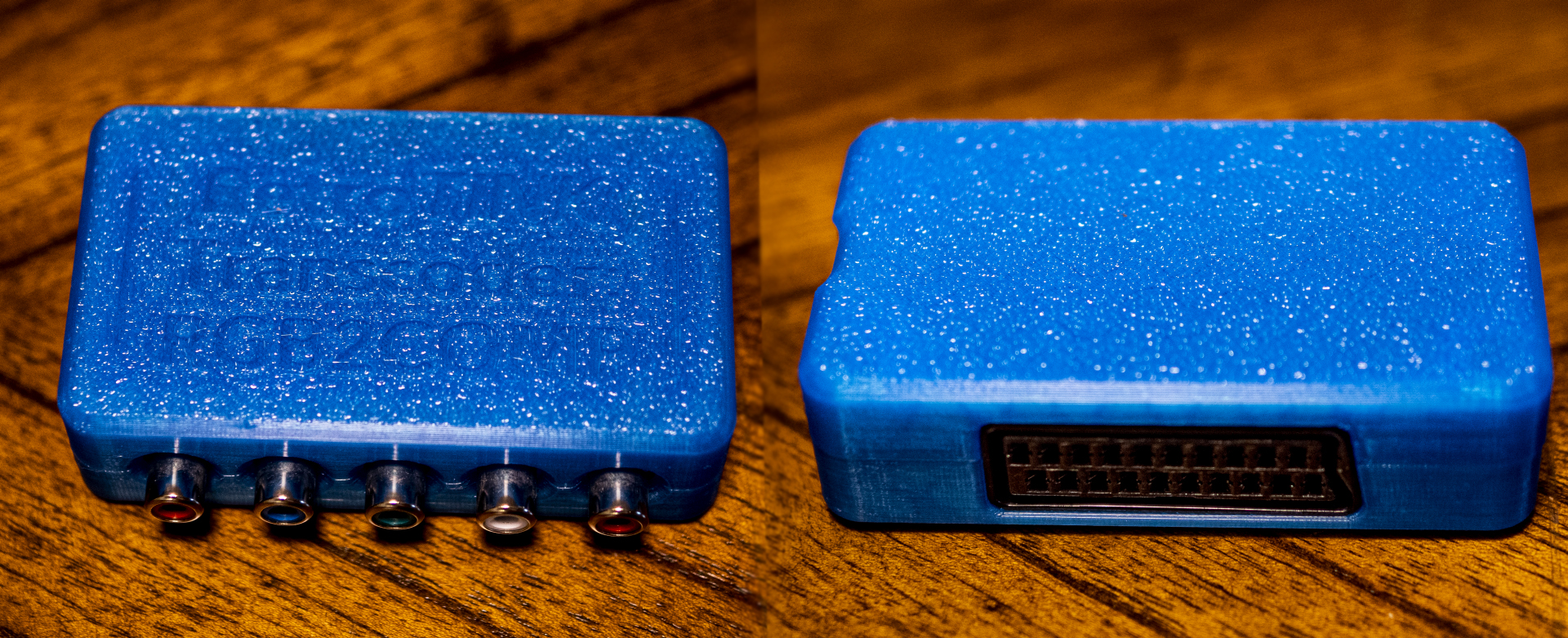I’ve had an opportunity to test out both the RGB2Comp and Comp2RGB series of RetroTINK products and in my opinion, both are the best you can purchase for the money. I’ll take a moment to describe what each one does and I’ll soon have a video comparing them to the competition. They should be available any time now, directly from the manufacturer, with resellers getting stock shortly afterwards:
Purchase all RetroTINK Products via multiple vendors worldwide here: https://www.retrorgb.com/retrotink.html
RGB2Comp:
This device converts RGB SCART signals to Component Video aka YPbPr. I’ve tested 240p, 480i and 480p signals through it and all worked perfectly. I believe this supports 720p and 1080i as well, but the RGB2Comp conversion matrix is set to rec. 601, so while it will work at resolutions higher than 480p, the colors won’t be exactly to spec. This is also the case with the Shinybow converter.
…and speaking of which, the RGB2Comp seemed to perform equal to the Shinybow, which up until now was the best choice for generic RGB to YPbPr conversion. While both are good choices, the Shinybow is more expensive (some stores sell it for almost twice the cost of the RGB2Comp!), making this a winner.
The most common scenario you’ll need a device like this is when you have a full RGB setup outputting to something like a PVM (or OSSC) and a consumer-grade TV that only supports component video (not RGB). People who are just connecting one or two consoles might be better off just getting an HD Retrovision cable, as opposed to a few RGB SCART cables and this…but people with full setups can greatly benefit from this (click for full-sized)!
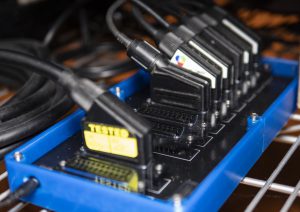
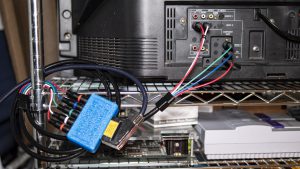
Comp2RGB
The Comp2RGB device is a more niche market product that converts Component YPbPr video to RGB SCART. Like the RGB2Comp, it supports multiple resolutions and I personally tested 240p, 480i and 480p. 720p and 1080i should also work fine with the Comp2RGB, as it automatically switches between Rec. 601 and rec. 701.
Not only does it support a wide range of resolutions, but it also properly converts the component video’s sync signal to csync, meaning it will have a much higher compatibility rate than other devices (I’ll go into detail about this in the upcoming video).
The most common use for the Comp2RGB would most likely be for people who’s monitors only support RGB and not component video. I’ve owned Mitsubishi Megaview and NEC XM29 monitors that didn’t have component inputs and even a few models of Sony PVM monitors are RGB-only as well:
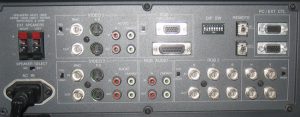
Another use would be for people who want fully-automated setups for both component video and RGB devices! That means you can run consoles like the PS2, PS3, PSP, Wii and Wii U through a auto-switching gcompsw, then connect that into the Comp2RGB and run the SCART output of that into a gscartsw…then finally into your monitor or scaler’s RGB input (see the picture below). It might sound crazy, but I know plenty of people with setups like this and they love being able to just power on their monitor and console without any switching:
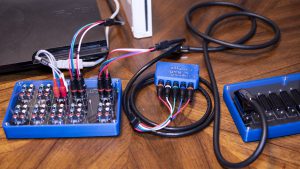
If you get either of these transcoders, please keep in mind that you’ll also want to use high quality component video cables. Using cheap, unshielded RCA cables can destroy the signal and will totally defeat the purpose of purchasing a high quality device like this. My favorite RCA cables are by far the ones from HD Retrovision and they’re offered as standard cables, as well as plug-to-receptacle “extension cables”. The links below will bring you to the exact ones I use:
Auto Amazon Links: No products found. http_request_failed: A valid URL was not provided. URL: https://ws-na.amazon-adsystem.com/widgets/q?SearchIndex=All&multipageStart=0&multipageCount=20&Operation=GetResults&Keywords=B07H3F6WYT&InstanceId=0&TemplateId=MobileSearchResults&ServiceVersion=20070822&MarketPlace=US Cache: AAL_bf40e384a28c0b06eafd4ea273efe907
